All about the palm-shaped maple
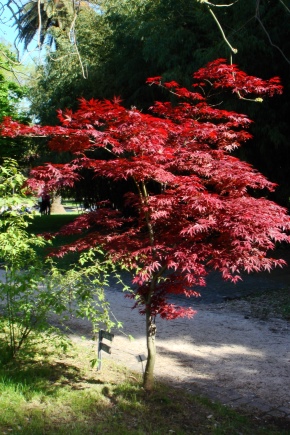
The palm-shaped maple is a plant that does not look quite like the classic and familiar street maple. The homeland of this plant is Japan, which means that the culture is quite peculiar. If you want to grow it in your own garden, it is better to know in advance all the features of the tree.
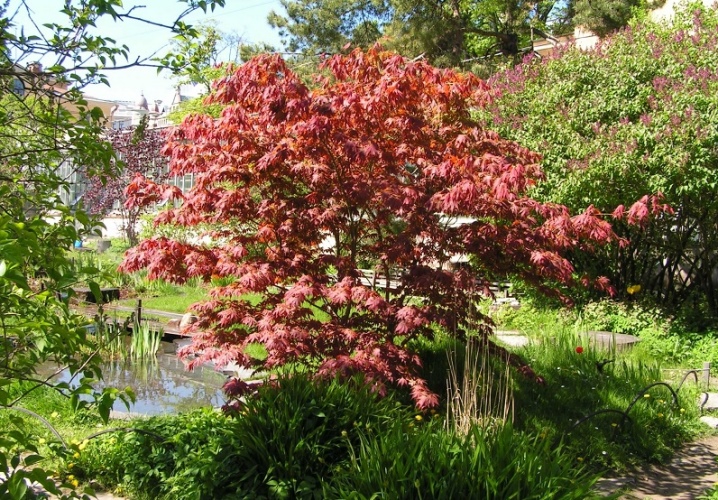
Description
The palm-shaped (fan) maple got its name from the unusual shape of the leaves. Something they resemble palms, and in Japan they are called "frog legs" at all. If we talk about the Russian language, then we can recall the word "hand" - this is an outdated name for the palm. That is why the maple with similar foliage is called palmate.
The culture is a shrub or small tree and can often be found in forests and undergrowth. Does not differ in growth: the average plant height ranges from 6-10 meters, but individual varieties can grow even higher. The trunk is usually even, but branches out as it grows, contributing to the formation of a round crown. With age, the crown begins to resemble a tent more.
The peculiarity of the culture is the foliage of unusual forms. It is different for all varieties, but in any case it will look like a palm with outstretched fingers. The number of finger-shaped processes is 5-9, all of them taper to the tip. The palm-shaped maple blooms in late spring, at the end of flowering, fruits are formed. They are lionfish, due to which the wind can carry seeds over a long distance.

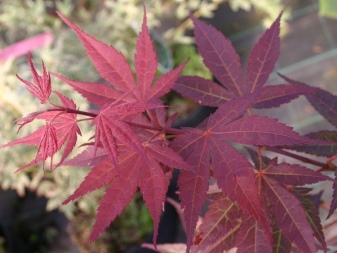
Review of the best varieties
Today, about 1000 varieties of maple are known, and the difficulty in classifying them is caused by the natural variability of the culture. Plants from the same parent may well look different: differ in growth, leaf shape, color, crown type. Therefore, even experienced gardeners can not always immediately determine what kind of plant is in front of them. Let's try to understand some of the features of popular varieties.

"Atropurpureum"
Quite a large palm-leaved variety, it can be represented by both a shrub and a tree. It grows slowly, with age, more in width than in height. The crown is like a ball or umbrella, the leaves have 5 to 9 fingers. In the first years of life, the foliage has a rich red tone, but later darkens. The root system is powerful, but the plant is demanding on the soil.
The height can be different - from 3 to 5 meters.
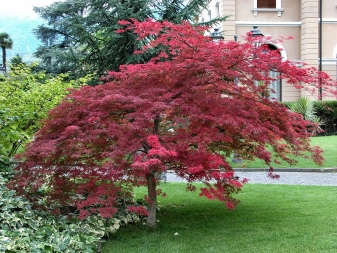
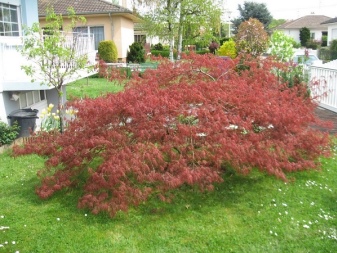
"Red"
This variety is a real mix of different types of maple. For example, Red Emperor is a small plant in the form of a shrub or tree, the width and height are approximately equal - 3 or 4 meters. In the autumn months, the foliage is bright red, in the summer it darkens.
The leaves of the Red Wine variety, in fact, resemble viscous red wine in color. The crown of this variety is pyramidal, but it can also be oval. The height is about 6 meters.
One of the most exotic subspecies of the Red variety is Red Blush. This is a very beautiful tree that can become the accent of the entire garden. It grows up to 10 meters, has an openwork crown. The leaves are red, but with an orange tint. In the middle there is a row of green veins, which gives an additional dramatic contrast.
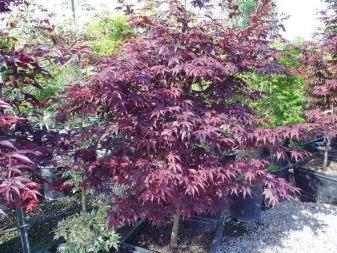
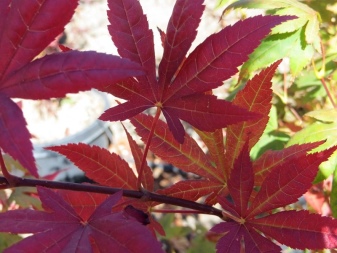
"Phoenix"
A low, sophisticated tree up to 3 meters tall is the dream of many gardeners. In spring, it blooms with pink leaves dotted with yellow veins. In summer it turns green, and by autumn it acquires a luxurious crimson color. The crown is distributed in a width of up to 2 meters.
The culture is very winter-hardy, it can withstand severe frosts.
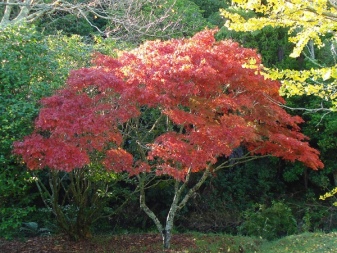
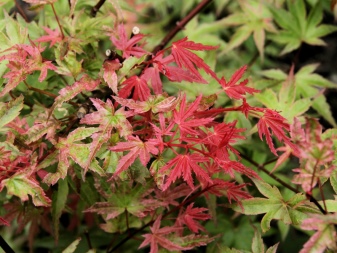
"Garnet"
This variety grows up to 4 meters, has a beautiful crown with delicate palm leaves. The color of the leaves is burgundy-red, but by autumn the crown becomes incredibly bright, already attracting eyes from afar. The fruits are also red, but in the fall they begin to silver, making the tree look elegant at any time of the year.
This variety also has good winter hardiness.

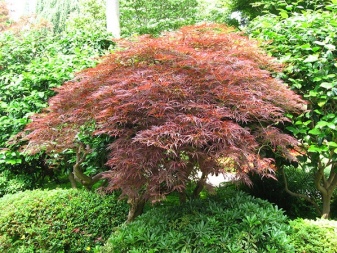
Other
There are a few more interesting varieties worth considering.
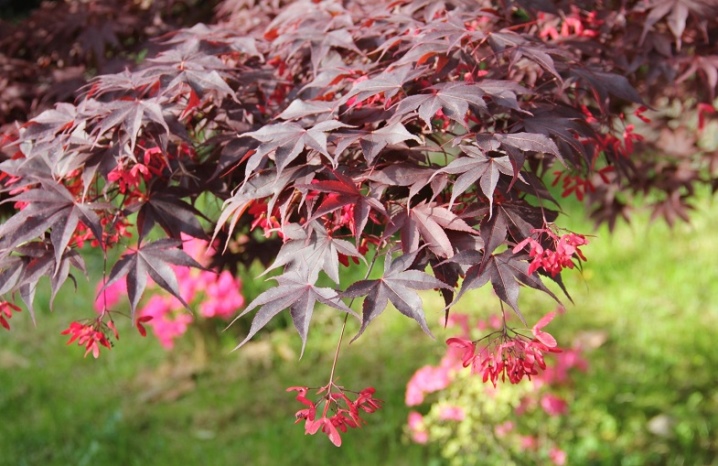
"Yellow"
A dwarf variety with high decorative qualities. It grows no higher than one and a half meters, the leaves are seven-lobed, in summer they have a dark red tint, closer to autumn they cast purple. The crown width is a maximum of 2.5 meters.
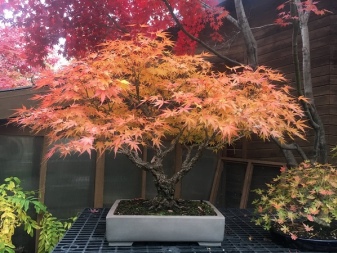
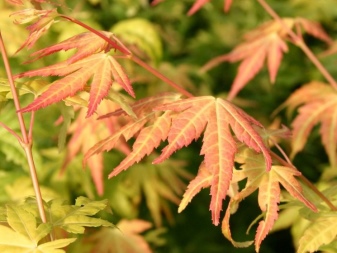
"Bloodgood"
One of the most beautiful varieties. The leaves are bright red in color, like a fan, the crown has an umbrella shape. The inflorescences are purple. The plant reaches a height of 4 meters, the crown is 2.5 m in diameter.
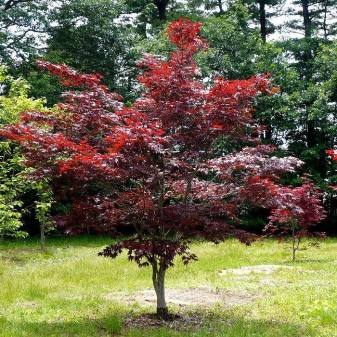
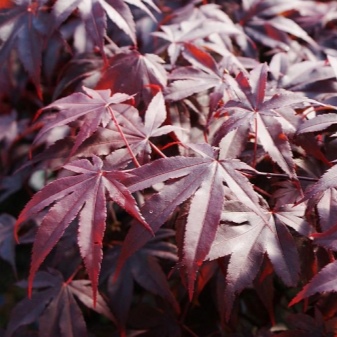
"Orange Dream"
It is a deciduous shrub up to 3 meters high. Looks pretty unusual. The green bark contrasts sharply with the leaves. In the spring they are yellow, then they change their color to light green. In autumn they turn yellow again, casting with sand and gold.

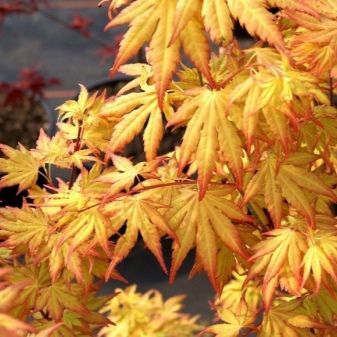
"Dissectum"
Several trees belong to this category of the variety. The most popular are Dissectum Nigrum and Dissectum Ornatum. The first subspecies grows only up to 2 meters, has a lush purple crown. The second one will be slightly higher - up to 3 meters. The crown is bright, red-orange.

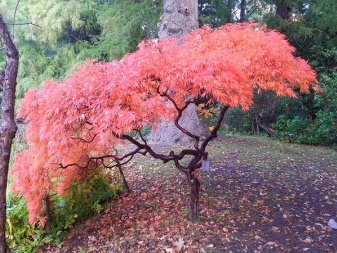
"Pixie"
It preserves scarlet foliage almost all year round, so it is suitable for owners who want to contemplate the beauty of the site at any time and any season. It can grow up to 6 meters.
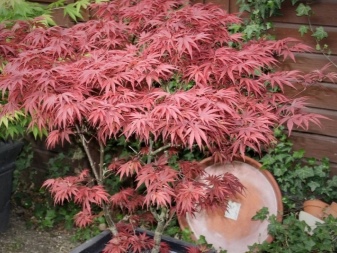

Landing
It is best to buy a ready-made seedling for planting. It is worth purchasing such copies in proven nurseries, ready to provide the necessary documents. When buying, check the seedling for rot and disease. It is important that he be with an earthen lump.
Maple is planted in early autumn or mid-spring. The main thing is that the soil is not cold. The site should not be shaded. Landing takes place in several stages:
-
a hole is dug in the ground, it should be made 40 cm wider than the container in which the maple was bought;
-
the bottom of the hole is covered with a 15-centimeter layer of drainage (it is best to take rubble);
-
taken in 2 parts of humus and peat, mixed with 1 part of sand, half filled into the hole;
-
the seedling is located in the middle, the roots are straightened, the root collar is slightly raised;
-
the seedling is covered with earth, filled with 10 liters of water;
-
as soon as the water is absorbed, add another 10 liters.
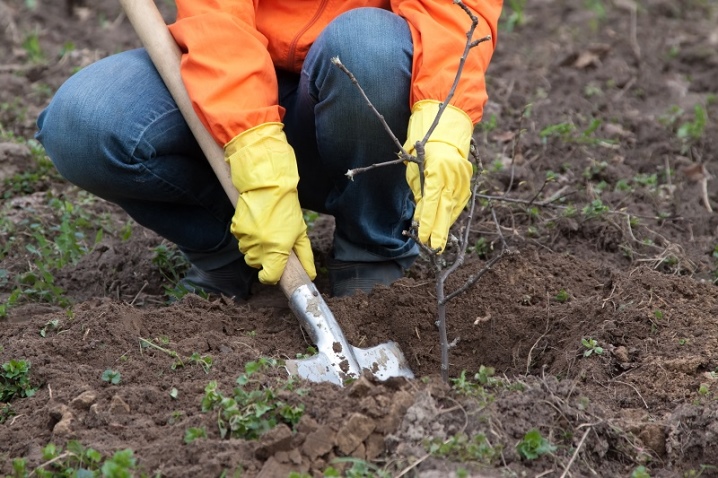
Care secrets
Growing palm maple is not an easy task. After all, such plants are accustomed to different conditions, and not all of them find it easy to take root in a more severe climate. The task of the gardener in this case is to provide the most correct care. There are several important aspects.
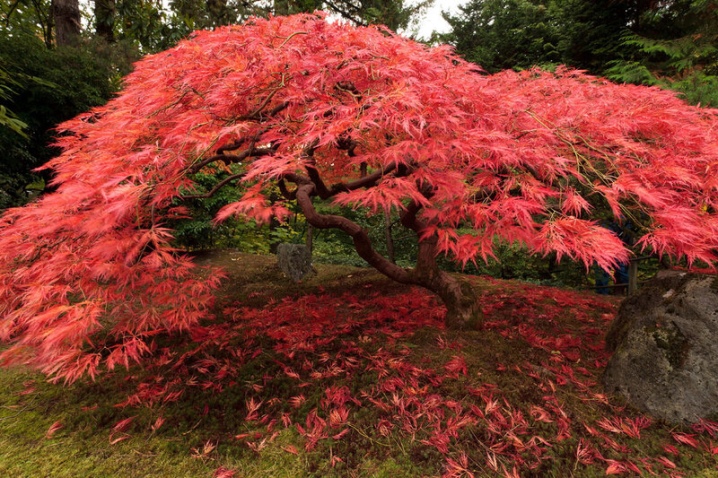
Watering
For the first 30 days after planting, maple is watered every week. In the autumn-spring period, it will be enough once every 14 days, in summer, water is served every week once, in extreme heat - twice.
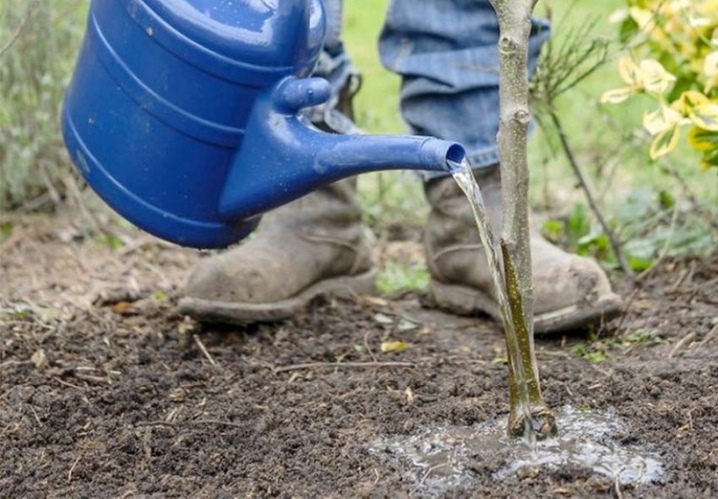
Top dressing
Maple must be fertilized annually, this is done in the spring. There shouldn't be any special difficulties: you just need to buy a complex fertilizer for Japanese maples and prepare it according to the manufacturer's instructions.
Maple also responds well to organic fertilizing solutions.

Loosening
The near-stem circle of the tree is rarely loosened: only 2 times a year is enough. Mulch can be added at the same time. And also it must fit for the winter. Besides, you need to regularly remove the weeds growing near the tree.
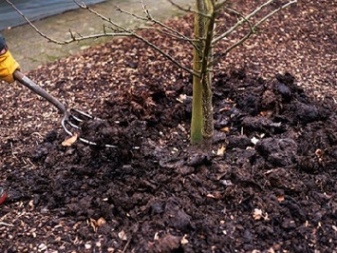
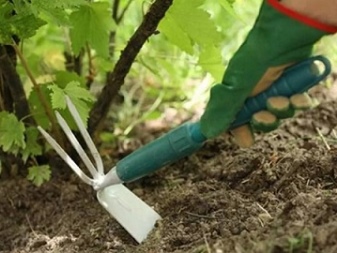
Pruning
In most cases pruning is not necessary for palm-shaped maples, as these trees form their own crown. Only dried leaves are cut off, as well as branches that interfere with the normal passage of air or hang down to the ground.
Only in rare cases, pruning is carried out in order to improve the shape of the crown.
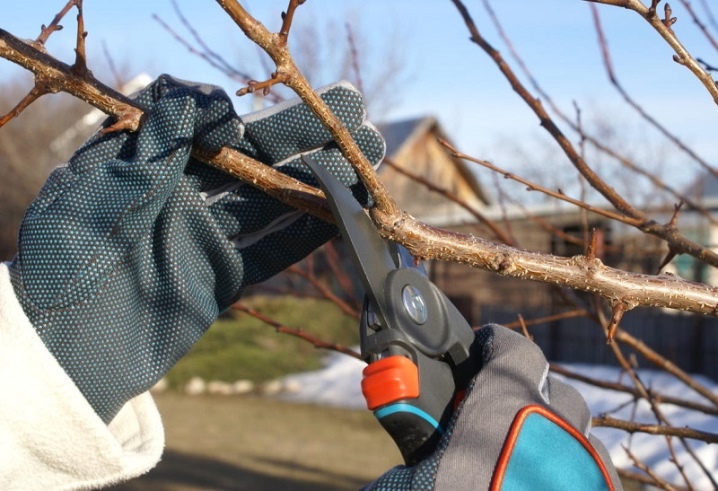
Preparing for winter
This is a very important point that should not be overlooked. Loosening is stopped at the beginning of autumn to prevent the emergence of fresh shoots. Fallen leaves are immediately removed. Then cover the tree with any covering material. If the winters are too harsh, and you suspect that the plant will not survive them, it is better to initially grow the maple in a tub so that you can bring it indoors in winter.

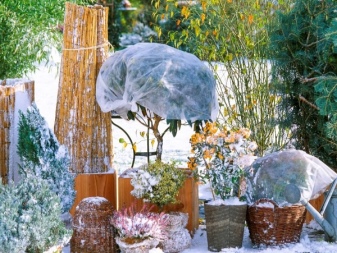
Reproduction
The palmate maple is propagated by the seed method. The seed is harvested in the fall, as soon as it is fully ripe. Then it is advisable to stratify it by keeping it in the refrigerator for a couple of months, but many do without it. Having finished with the preparation, small containers are selected and filled with soil. The earth is watered, and then the seeds are spread on its surface, slightly pressing. The container is covered with glass or foil, placed in a well-lit place.
The shelter will need to be removed daily to ventilate the containers. It is recommended to moisten the soil with a spray bottle. When the first shoots appear, the shelter can be removed. The next stage is picking, it is carried out when there are at least 2 leaves on the sprouts. Plants are planted in different containers, and now it only remains to wait for their height of 30 cm. Such seedlings will be ready for planting in open ground.
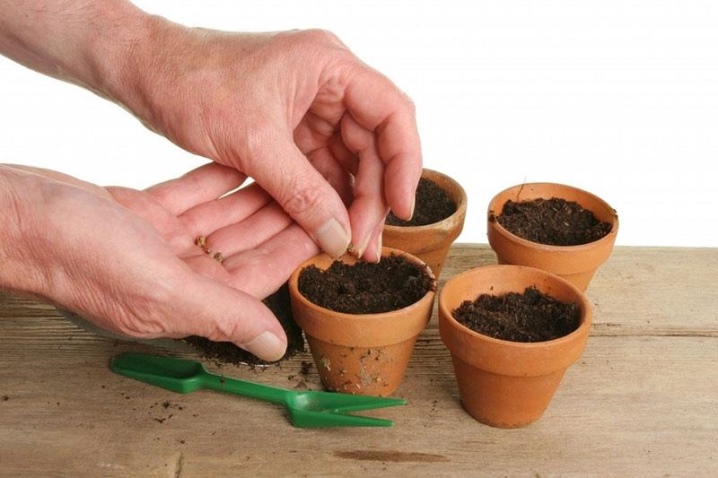
Diseases and pests
Palm-shaped maple resists disease well, but if the tree is kept in the wrong conditions, then it will get sick often. Several types of ailments are most common.
-
Discoloration of leaves, spots. If dark spots appear on the foliage, then such a maple will quickly lose its decorative appearance. Stains are caused by some types of fungi, which can be fought with Bordeaux mixture or fungicides. If the foliage turns yellow at the edges and dries, it is recommended to revise the watering regime.
-
Anthracnose. Fungal disease also causes discoloration of the leaves. The foliage quickly falls off, the tree weakens. Fight against the scourge of fungicides.
-
Verticillary wilting. One of the most dangerous diseases, because it can quickly destroy a culture. The lesion begins in the root system, then spreads to branches and leaves. The latter dry and turn brown, quickly fall off. There is no cure, you just have to destroy the tree.
-
Powdery mildew. A common ailment, easily recognized by the appearance of a whitish bloom on the foliage. It is treated with fungicides.

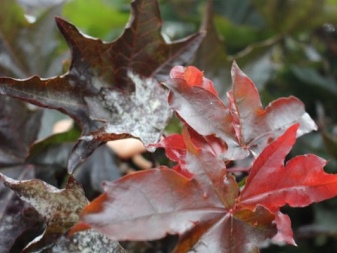
As for pests, the following insects can help weaken maple:
-
aphid;
-
spider mite;
-
maple mealybug;
-
caterpillars;
-
leaf beetles;
-
whitefly.
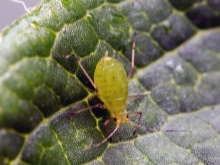
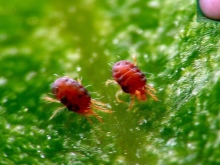
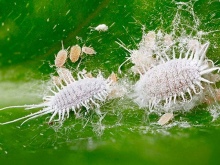
All these insects can be destroyed both by folk methods (for example, a solution of soap, tobacco, garlic), and by complex insecticides. If the pest colony has grown, it is recommended to immediately use insecticides.
In order for the tree to hurt as rarely as possible, and also not to be influenced by parasites, it is necessary to take preventive measures in a timely manner, and also to ensure that the correct conditions are maintained on the site.
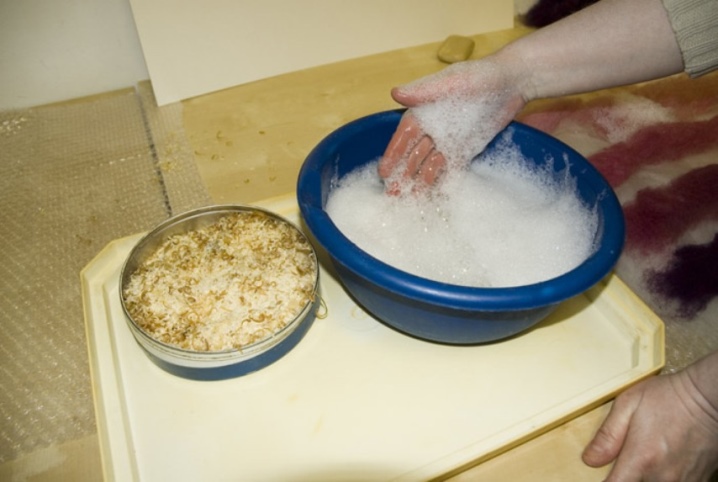
Here's a short list of recommendations:
-
do not be zealous with watering, because a fungus may well appear from excess moisture;
-
trees should be planted at a distance of at least 4 meters from each other, otherwise the flow of oxygen will be disrupted;
-
fallen leaves should be removed immediately - this is an excellent environment for bacteria and viruses;
-
it is forbidden to burn affected and uprooted trees in the areas, since fungal spores are carried by the wind;
-
if there have been cases of fungal infections in other crops or maple predecessors, then the plants must be treated with Bordeaux liquid in the first month of spring.
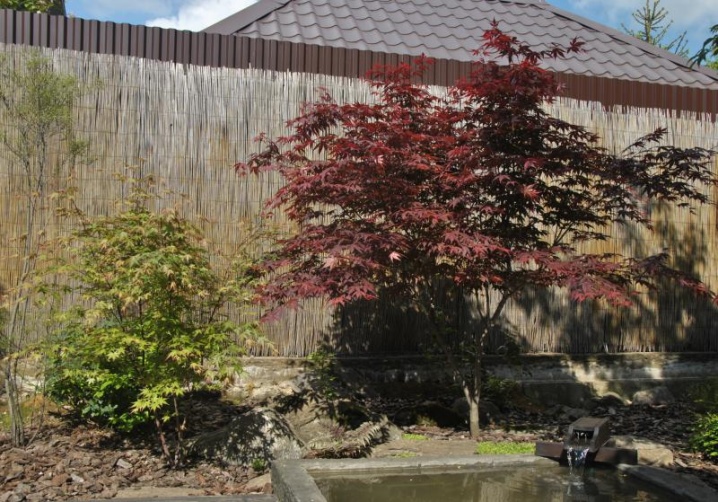
Application in landscape design
Palm-shaped maple will be a real boon for those who are already tired of the cultures familiar to the eye. A similar plant is used in completely different ways.Most often this is a solitary planting, in which the maple becomes the accent of the site. The most successful choice would be varieties with bright red leaves. They will ennoble not only Japanese-style gardens, but also any other well-kept areas.
In addition, fan maples are often used to create spectacular shady alleys. High varieties are suitable for long paths, but if the task is to frame a short path, then dwarf maple varieties will be a good solution. They can be successfully combined with low-growing conifers, ornamental green plantings in the shape of a ball.
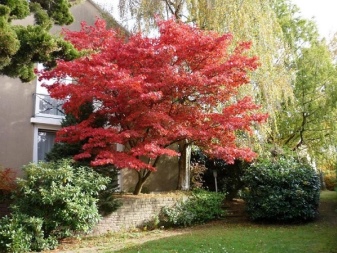

Palm-shaped maples are also widely used when creating mixborders. This culture is combined with many types of plants and flowers. She will look amazing in the company of barberry, magnolia, lilac. Especially interesting compositions are obtained when the designer plays with the contrast method. For example, a maple tree with carmine leaves is planted among snow-white, blue or purple flowers.
Another design option is to plant a maple tree in a large decorative tub. Containers with plants can be placed in the desired areas of the garden or in front of the entrance to the house. It will be easy to move them if desired by redesigning them. And also maples in tubs look beautiful near artificial reservoirs, reflecting in the water and creating an indescribable play of light.
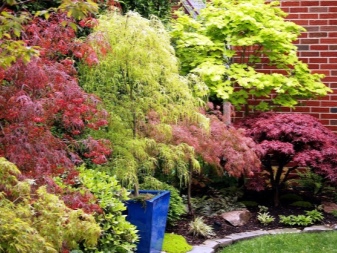
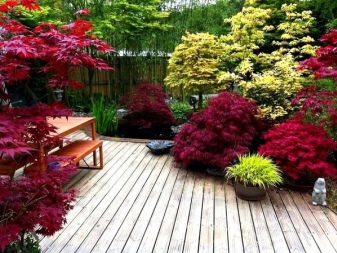
You can learn how to properly care for Japanese maple in the video below.



































































The comment was sent successfully.